 | Name: Simon Lawson
Overview: Simon Lawson`s father was 65 when he was born and his mother 44, and both died while he was in his teens. His unhappiness affected his public school education and he failed to get a place at Cambridge. Instead he worked at Sotheby`s in London and it was only after he married in 1971 that he obtained a degree and a doctorate – leading to his present work as an Oxford University librarian. He has warm memories of being treated by two eminent consultants – RD Lawrence and John Nabarro – and has always enjoyed knowing as much as possible about diabetes.
Hits=5 |
|
|  | Name: Joanne Pinfield
Overview: Joanne Pinfield was only 5 when she had the frightening experience of waking from a coma in hospital and she has found diabetes frightening for much of her life. At school she felt isolated by being the only person with diabetes. She left at 16 to work in a pottery with a sympathetic boss who helped her not to feel ashamed of diabetes, but then reverted to hiding her condition during 12 years working in a factory. Her father`s death in 2001 prompted her to take better care of herself. She married in 2002 and runs a limousine business with her husband.
There are also interviews with Joanne`s mother, Mary Potter, and husband, Nick Pinfield.
Hits=3 |
|
| 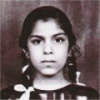 | Name: Bena
Overview: Bena was born in the Kigezi District of Uganda, the daughter of a wealthy businessman. She was diagnosed when nearly 12 and then shunned by children who thought diabetes was contagious. She lived on chapattis and spinach and a bitter vegetable juice thought to cure diabetes. When Idi Amin expelled Ugandan Asians in 1972, her family came to England, and she was delighted to be allowed to eat a wider range of food. She eventually married an Englishman and had two daughters. She works as an office administrator, in a social services department that supports disabled children.
There are also interviews with Bena`s daughter, Emma and her husband, Terry.
Hits=3 |
|
| 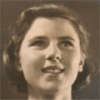 | Name: Margaret Williamson
Overview: Margaret Williamson was brought up in a village in North Yorkshire, the only daughter of an industrial chemist. Her mother was diagnosed with diabetes when Margaret was aged 2, and put on a diet of no carbohydrate with high quantities of insulin. When Margaret was diagnosed, a Newcastle consultant, James Spence, put mother and daughter on a more modern regime of high carbohydrate, which was weighed at each meal. After school, she went to business college in London, and worked as a secretary for directors of scientific institutions. She married a Cambridge research scientist and had two children.
Hits=2 |
|
|
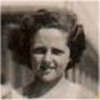 | Name: Ann
Overview: Ann came to England in 1945, and was diagnosed when the matron at her boarding school found her drinking the bath water. Her mother had worked as a nurse at Kings Hospital, London, and took her daughter there, to be treated by R.D. Lawrence (co-founder of the British Diabetes Association, now Diabetes UK). She has memories of being made to go into a hypo, of glass syringes, thick needles, and embarrassing urine tests. She worked as an occupational therapist, and brought up two children alone. Despite eyesight problems, she now makes a living as an artist.
Hits=2 |
|
| 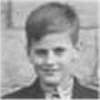 | Name: Peter
Overview: Peter`s father was a professor and both parents were well-informed about diabetes after his older brother was diagnosed in 1945. They spotted Peter`s symptoms early and at first he only needed four units of Lente insulin to last 24 hours. He was educated at Oxford and worked in the steel industry for several years. He is now a management consultant and has few problems associated with diabetes. He has recently remarried, after being widowed in 2003, and has a daughter with diabetes who is `much more able to cope with disturbances to her daily routine than I am`.
Hits=2 |
|
|
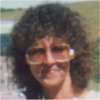 | Name: Mary Potter
Overview: Mary Potter`s daughter, Joanne, developed symptoms of diabetes in 1978, when she was five. Her GP refused to believe she had diabetes and Joanne nearly died. This traumatic beginning left a legacy of anxiety and anger. Mary noticed that another mother of a diabetic child was more laid-back than she was. She also noticed that when a niece was diagnosed around ten years later, there was much more specialist help and information available. Mary still sometimes accompanies Joanne to diabetic clinics. Joanne hates clinic visits because she feels that doctors treat her like a child and make her feel guilty.
There are also interviews with Mary Potter`s daughter, Joanne Pinfield, and with Joanne`s husband, Nick Pinfield.
Hits=2 |
|
| 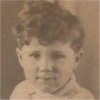 | Name: Allan Jones
Overview: Allan Jones` father was a miner with six children. They had little money but had to pay for insulin and equipment until the National Health Service was created in 1948. They couldn`t afford cotton wool and re-used needles until they were blunt. When Allan was 15 he got a job as a messenger on the railways but had to pass a medical before being promoted. He feared he would lose his job if his diabetes was discovered, so took with him a sample of his brother`s urine! He passed the medical and worked happily on the railways for 30 years.
Hits=1 |
|
|
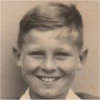 | Name: Ian Vokins
Overview: Ian Vokins was diagnosed shortly after leaving junior school and when he joined his secondary modern school, he was treated `like an alien` and fed dried apricots at every school dinner for 3 years! He was bullied throughout his school-days and left as soon as he could, aged 15. After that, life `seemed to open up` and he `started learning` while he worked as a technician in fields as diverse as atomic energy, cryogenics, orthotics, packaging, and space science. His work often took him abroad, and he says that diabetes hasn`t stopped him doing anything, apart from flying aeroplanes!
Hits=1 |
|
| 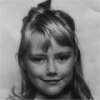 | Name: Clare
Overview: Clare was brought up in a remote Cornish hamlet. Although she developed Type 1 diabetes around the age of 5, she was not given insulin until about 4 years later and was instead kept on a near-starvation diet. She rebelled for many years and only began to take care of herself after she was registered blind in 1984. She went on to gain a second BA, MA and PhD and is now a university research fellow. She has been helped by coming to regard her lack of sight as `an issue around social equality as opposed to a medical issue`.
Hits=1 |
|
|
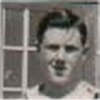 | Name: Ron Craythorne
Overview: Ron Craythorne worked all his life in the family business of carpentry and joinery but, when he retired, there was no-one to take over, so now he and his wife give shows for charity, showing people round the old workshop and selling the products of his woodturning. (He carved and painted the wooden fruit and bowls shown in his photo.) He has played team sports all his life and diabetes has caused him few problems. However, he knows of the problems it can cause, from members of the diabetic group he founded several years ago.
Hits=1 |
|
| 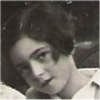 | Name: Erika Harding
Overview: Erika Harding`s father was Jewish and, in 1939, after the Nazis invaded Austria, she came by boat to England. When she looks at her photo of the thin, hollow-eyed little girl on the boat, she`s sure that she already had diabetes. After diagnosis, she was treated at King`s College Hospital, London, by R.D. Lawrence (co-founder of the British Diabetes Association, now Diabetes UK). She left grammar school at 18 and worked as a medical laboratory scientist until she retired. She and her artist husband have both played in many chamber music ensembles.
Hits=1 |
|
|
 | Name: Kushira Hackett
Overview: Kushira Hackett`s mother was white and her father black – from Guyana. Her parents split up when she was 5 and her mother later married a Jamaican. After diagnosis, the hospital staff explained to her mother about portions and gave her scales for weighing food, but gave no explanations to Kushira. Her mother also gave no explanations, and she thinks this led to her rebellion against diabetes, and to her leaving home aged 16. She had a period of homelessness, but later gained a law degree and now lives happily in Birmingham with her partner and two children.
Hits=1 |
|
| 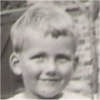 | Name: Francis Andrews
Overview: Dr. the Rev. Francis Andrews was diagnosed with diabetes on the day that war was declared in September 1939. He was the son of a doctor who`d worked as a medical officer in Flanders during the First World War. Francis also trained to be a doctor, and eventually became a consultant physician in rheumatology, having been advised not to specialise in diabetes. He married and has 6 children, 15 grandchildren and 1 great-grandchild, none of whom have diabetes. He took early retirement to train as a Catholic priest, and was ordained in 1994.
Hits=1 |
|
|
 | Name: Gillian McGuinness
Overview: Gillian McGuinness studied human physiology at Manchester University before doing an eighteen-month Diploma in Dietetics at Hollings College in 1977, when there was a ‘dire shortage of dietitians`. She worked in NHS and private hospitals in Manchester and Bristol and then at Birmingham Children`s Hospital from 1990. She remembers that in the late 1970s, children with diabetes didn`t always grow very well or get full employment opportunities or take for granted that they would have children, whereas now she expects them to live long healthy lives and be able to achieve all the same things as people without diabetes.
Hits=1 |
|
| 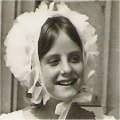 | Name: Harriet
Overview: Harriet was diagnosed when she was 12, and loved Great Ormond Street Hospital, where she was treated until she was 17. Her grammar school couldn`t cope with her diabetes, so she left at 15 to do O and A Levels elsewhere, and eventually gained a Diploma in Fine and Decorative Arts. She has worked for the Tate Gallery and for a company that bought art for corporations, and has also run her own business, and worked in college and university administration. Her daughter was diagnosed with diabetes at the age of 9.
There is also an interview with Harriet`s husband, Greg.
Hits=1 |
|
|
 | Name: Patsy
Overview: Patsy is one of ten children. Her parents emigrated from Jamaica in the 1950s. Her mother worked as an auxiliary nurse and her father as a builder. After diagnosis, she resented having to weigh portions of carbohydrate, while her family could eat what they liked. She still calculates the weight of food. The question `Why me?` has persisted throughout her life. She feels that everything possible has gone wrong with her health and she is now on haemodialysis. But her love for her young son keeps her going and, despite poor health, she`s determined to spend time with him.
Hits=1 |
|
|
| Search returned 29 matches |